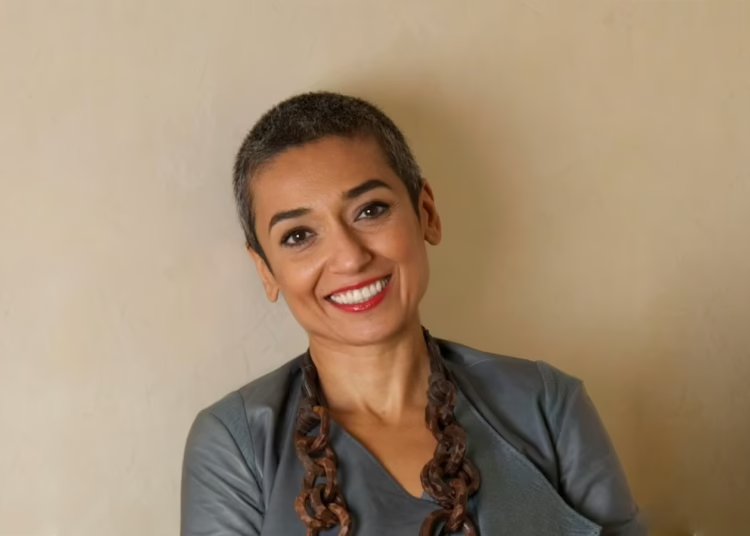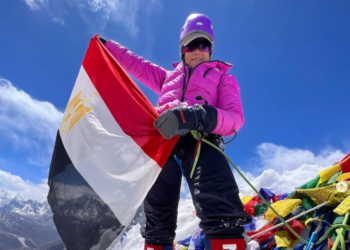In 1993, a young woman stood outside a Washington, D.C. office with a borrowed briefcase and a bold vision. She’d survived the horrors of war, witnessing firsthand how conflict shattered lives but couldn’t break human resilience. This marked the humble start of what would become Women for Women International.
Driven by stories of survival – from rape camps to systemic oppression – she refused to wait for permission to act. With no funding or staff, she partnered with a local church to send $300 to 30 women in Bosnia. That small act of love and risk ignited a global movement.
Over two decades, her organization grew beyond mailing checks. It became a lifeline, offering job training, legal aid, and emotional support to over 300,000 women across war-torn regions. “Change starts when we listen,” she often says, emphasizing that true empowerment comes from amplifying survivors’ truths.
Key Takeaways
- War survivor turned advocate creates global support system for women
- Early efforts focused on direct financial aid and community building
- Organization addresses both immediate needs and systemic barriers
- Over 300,000 lives transformed through education and resources
- Emphasis on personal stories drives lasting social change
Inspiration Behind a Movement
A spark ignited in 1992 when library research revealed shocking truths about wartime violence against women. Newspaper clippings detailed systematic rape camps in Bosnia – stories buried beneath headlines about political negotiations. This discovery became a turning point, merging personal history with global injustice.

From Witness to Warrior
Having survived the Iraq-Iran war, the founder understood how conflict weaponizes vulnerability. “Silence protects no one,” she later stated, recalling her resolve to act despite limited resources. Early meetings with church leaders and immigrant groups revealed a shared hunger for tangible solutions.
The Courage to Begin
Mailing those first $300 checks wasn’t just charity – it defied the idea that change requires permission. Personal savings funded initial efforts, while handwritten letters built trust across continents. Each envelope carried more than money: it carried proof that someone cared.
“When systems fail, people become the system.”
This philosophy transformed isolated acts into a global support network. By centering survivors’ voices, the work challenged stereotypes about war-torn communities. Training programs didn’t just teach skills – they restored dignity through collective healing.
Empowering Change: Zainab Salbi’s Vision & Impact
Women rebuilding their communities after war found more than checks in their mailboxes. They discovered a global sisterhood designed to uplift entire generations. This vision transformed small acts of kindness into a blueprint for systemic change.
Transformative Stories of Survival and Support
A Congolese seamstress used microloans to start a textile cooperative. Her business now employs 17 neighbors. “The training taught me to see my scars as strength,” she shared. Stories like hers reveal how economic support sparks lasting transformation.
In Rwanda, trauma healing circles became safe spaces for truth-telling. Participants rebuilt trust through shared meals and farming projects. These groups prove that recovery begins when survivors lead the way.
Celebrating Milestones and Global Reach
Over 25 years, $100 million reached women in 8 conflict zones. Partnerships with local leaders ensured funds addressed urgent needs. From Afghanistan to Nigeria, programs adapted to cultural contexts while challenging harmful norms.
“We don’t rescue people – we walk beside them.”
This approach fueled growth from 30 letters to 300,000 lives changed. Leadership transitions in 2011 strengthened collaborations with UN agencies and corporations. Today, graduates mentor new participants, creating ripple effects across continents.
Global Initiatives and Multimedia Engagement
Global stages became classrooms for truth-telling as advocacy expanded beyond borders. Multimedia tools transformed local stories into universal calls for justice, bridging divides between survivors and policymakers.

Engaging Lectures and International Panel Discussions
The Gruber Distinguished Lecture series sparked fiery dialogues about law and human dignity. Legal scholars clashed with grassroots activists, dissecting how justice systems often fail women in war zones. A former UN ambassador noted, “Protection laws mean nothing without community enforcement.”
“We amplify whispers until they shake courtrooms.”
Students from 12 countries joined hybrid panels, challenging experts to address cultural barriers. Breakout sessions focused on practical solutions – from trauma-informed policing to economic reparations for survivors.
Using Film and Media as Advocacy Tools
The documentary Women, War, and Peace turned camera lenses into megaphones. Raw testimonies from Congo to Ukraine exposed how war weaponizes gender. Screening discussions often evolved into strategy circles, with viewers planning local action steps.
Digital campaigns tripled volunteer sign-ups within months. Short films produced through collaboration with survivors went viral, proving personal narratives drive policy change. As one film student remarked, “These stories rewired how I see my legal studies.”
Conclusion
One woman’s journey from war survivor to global advocate proves people power can rebuild broken systems. Over 25+ years, what began with handwritten letters grew into life-changing programs for hundreds of thousands. Women survivors transformed into entrepreneurs, mentors, and community leaders – rewriting their stories through education and healing circles.
This work thrives on truth-telling and bold action. Early risks – like mailing personal funds to strangers – created global support systems. Students now study these models, learning how grassroots commitment outlasts conflict. Every microloan and trauma workshop shows another way forward.
Progress continues as others find courage in shared struggles. You can join this movement: volunteer, donate, or amplify women’s voices. Change starts when we choose to stand together – one act of solidarity at a time.
FAQ
How did personal experiences shape the creation of Women for Women International?
Growing up amid war and witnessing systemic oppression fueled a commitment to uplift marginalized communities. By sharing stories of survival, the organization fosters solidarity, helping women rebuild lives through education, economic support, and advocacy.
What role do storytelling and media play in advancing women’s rights?
Stories amplify voices often silenced by conflict or inequality. Films, lectures, and global discussions turn lived experiences into tools for education and policy change, inspiring action and challenging harmful norms.
What milestones highlight the impact of global empowerment initiatives?
Over three decades, programs have reached millions across conflict zones, providing resources to heal trauma, secure livelihoods, and advocate for legal reforms. Survivors’ journeys from isolation to leadership underscore transformative progress.
How does collaboration drive systemic change for women?
Partnerships with grassroots groups, governments, and artists create inclusive solutions. By centering survivors’ truths, initiatives address root causes of violence and inequality, fostering sustainable shifts in culture and law.
Why is resilience critical in advocating for gender equality?
Progress demands courage to confront stigma and power imbalances. Through circles of trust, women reclaim agency, turning pain into purpose—a testament to the unyielding power of collective hope and action.
How can individuals support women’s empowerment efforts globally?
Engage with survivor-led movements, amplify marginalized voices, and challenge oppressive systems. Every act of solidarity—whether donating, volunteering, or sharing stories—fuels a ripple effect of justice and renewal.






